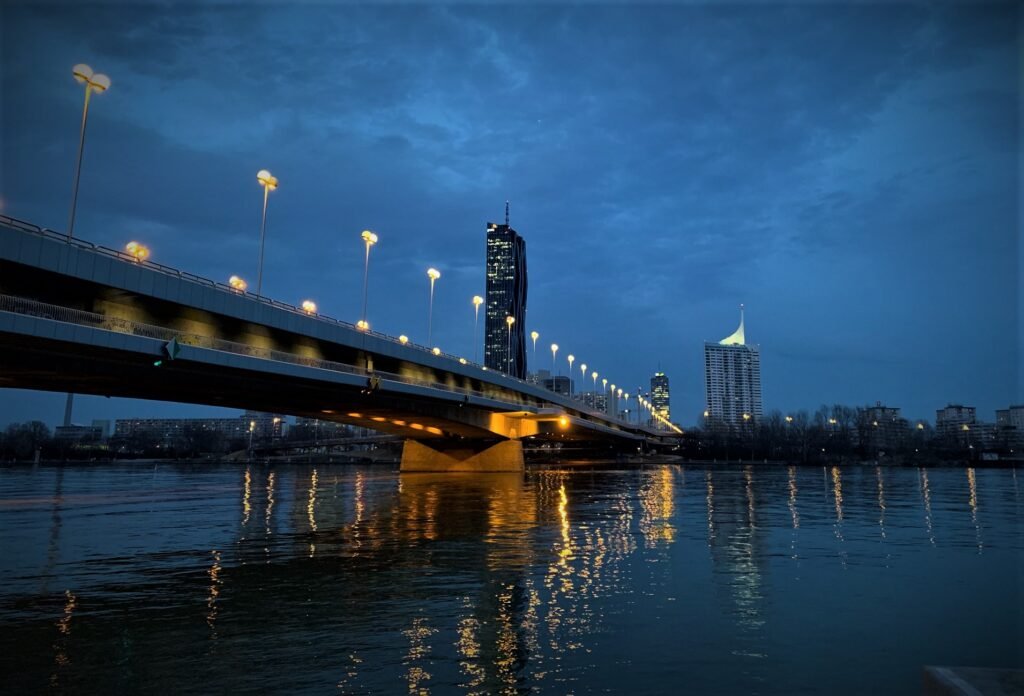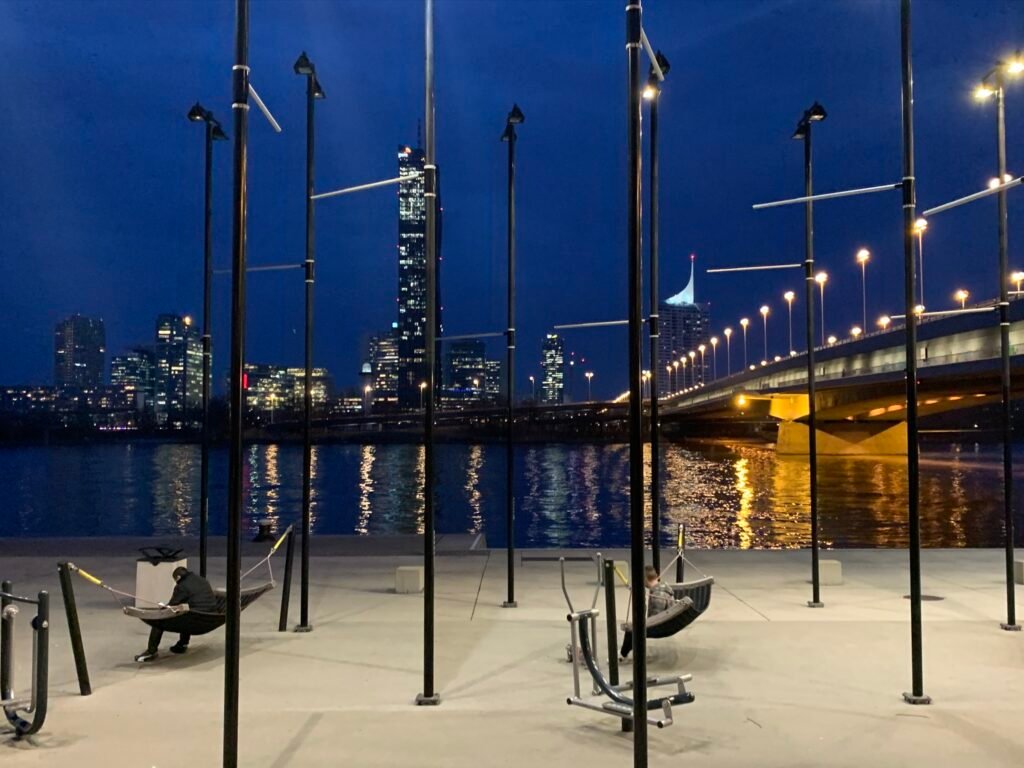When I thought that no city in Europe could surprise me anymore, Vienna appeared. Elegant. Majestic. Monumental. Imperial. Streets rich in medieval, renaissance, and progressive memories; and with corners immortalizing his son Wolfgang Amadeus Mozart and his adopted son Ludwig van Beethoven.

Thirty thousand steps in less than 24 hours (according to my iPhone) was necessary to enter into the time machine and live the essence of the capital of Austria: Have a classic coffee and eat chocolates in cafeterias where artists, philosophers, politicians and revolutionaries enjoyed their talks; eat the traditional Wiener Schnitzel (veal meat), and enter the opera for a ballet performance.
At the same time, I got carried away by its modernity, crossing the bridge over the dazzling yet choppy Danube River in a scooter, which has become so popular in Europe.
How did I get to Vienna?
During my stay in Germany, I opened one of my flight apps (Hopper). Just 37 USD (one way) on Wizzair. I could never say no to that tempting offer! It was February, the cheapest month of the year; not just in air tickets, but in hotels and theaters as well.
It was 8am when my plane landed in Vienna. I took the airport bus (line VAL2) and in 20 minutes I was in the city center. Unsurprisingly, the hotel could not check me in, but they seamlessly agreed to store my bag.
Later, I started my journey. I opened my map and without hesitation, my first stop would be for breakfast in one of the most traditional cafes in the country for decades, if not for centuries: Café Central.
Café Central

The charm of Vienna’s most famous cafeteria makes your visit a sweet experience. Its history, gastronomy, and architecture are a magnet for the dozens of tourists who line up daily for up to an hour to access a table.
Inside it looks like a baroque church, but with paintings by the Austrian Emperor Francis Joseph and Empress Elizabeth, known as Sissi. The service is quick and its atmosphere, welcoming. In my case I ordered the “Mohr im Hemd”, which was a hot chocolate cake and Viennese-style vanilla ice cream. It was spectacular! But, the most famous cake is the Sacher cake (I found out later).
Café Central is one of Vienna’s most iconic sites because since 1860 it brought intellectuals, politicians, and artists to its premises. So, it is inevitable to think that at the next table Freud, Hitler, or Stalin might have sat down and tasted the same coffee in your hand.
The Hofburg Palace

It was almost noon, so I was against the clock. When I left the cafeteria and without looking for it, I came across the great Hofburg palace. The horse-drawn carriages trotting around this splendid site brought you back to imperial Vienna 600 years ago.
Since the sixteenth century, this architectural ensemble was the residence of the Habsburgs, one of the most influential royal families in Europe. Inside the citadel, you can see the ancient chambers of the emperors, the museums, the church, the winter school of Horseback Riding and the office of the President of Austria.
Graben and Kohlmarkt Avenue
As I kept walking, I found my favorite streets: Graben and Kohlmarkt. They are the luxury avenues in Vienna, surrounded by the shops Gucci, Hermes, Fendi, Burberry, Tiffany, Dior… and cafes with gardens that decorate the city.


St. Stephen’s Cathedral or ‘Stephansdom’
Walking along Graben Avenue, I reached the heart of the Austrian capital: Stephansplatz and the Gothic Cathedral of St. Stephen, which rose above the ruins of an ancient church. At first glance, the pointed needle-shaped tower that has more than 100 meters protrudes. Visitors can go to the tower viewpoint and have one of the best postcards in Vienna, specially at the sunset.

The City Council or ‘Rathaus’

The soul of Vienna is its buildings. One more imposing than the one you saw two minutes ago. My favorite and the one I saw in geography books and travel magazines: the town hall or ‘Rathaus’. In the winter months they open a huge ice-skating rink and surround it with food stands. “What a good vibe!!”, was what I expressed when I saw the place full of tourists enjoying the sunny day.
The Hundertwasser House
It was 4:00pm and it was time to meet the other side of Vienna. Its colorful, modern, and surreal part. After getting lost, I arrived at the 3rd district, the Hundertwasserhaus residential complex.
Defining it, it was not built by any emperor in the past centuries. Nor is it resembling gothic architecture. Rather, it was created in 1983 by an artist who is considered the Gaudí of Austria, Friedensreich Hundertwasser.
Construction is like a puzzle. There are no straight floors only fancy shapes, bright colors and in some windows, you see branches.
A gallery called Hundertwasser Village is a former mechanical workshop converted into a gallery and café.
The Danube River
As it was winter, the sun was saying goodbye earlier and I had to hurry to get acquainted with one of the most important European rivers in the world: The Danube. Being a little far from the historical circuit, I had no choice but to get on the scooter. I memorized the map and the direction I was supposed to take and took off.
The experience was fantastic. There is a lane only for bikes and skateboards. I also passed by one of the best-known parks, the Prater, but I did not stop. It was dark and I relished the experience of crossing the bridge over the river. A good opportunity to put on my headphones and listen to the famous melody: The Blue Danube.
The Vienna Opera House
It is inevitable to link the image of Vienna with the music. That is why the jewel of the Austrian capital is its opera, one of the best known in the world. Due to the low season I got my online ticket for $49 USD. When I went to claim my ticket I had a pleasant surprise: I was upgraded to one of the first rows.
Entering the theater, which was destroyed in World War II, is an almost mythical experience. It was to enter a Renaissance film or travel back in time and feel that behind the curtains would be Mozart getting ready for his performance.
Another stroke of luck was the play. It was a British ballet of choreographers Kenneth MacMillan, Wayne McGregor, and Frederich Ashton who each represented, with their dancers, the evolution of this art.
Arriving at midnight, my last steps were to the hotel. On my way through some dark alleys, I found Mozart’s house. Everything was closed and quiet. That made me realize that 24 hours were not enough to discover this sublime city and a future return is needed. In the meanwhile, my next destination was Prague (Czech Republic).

















